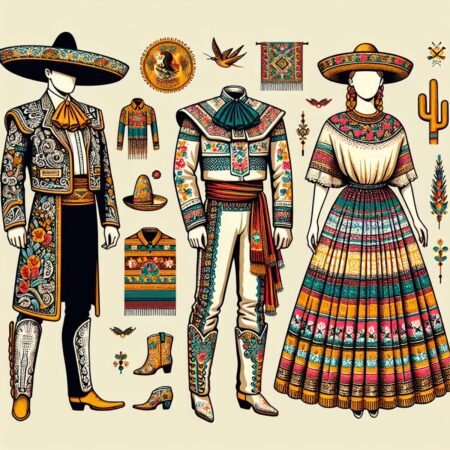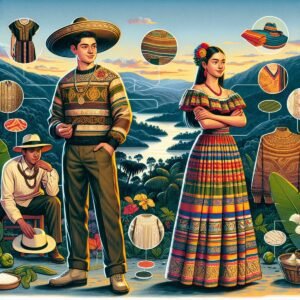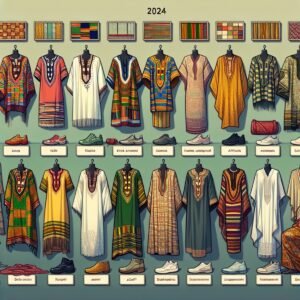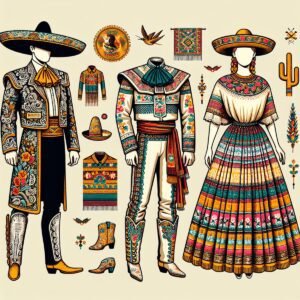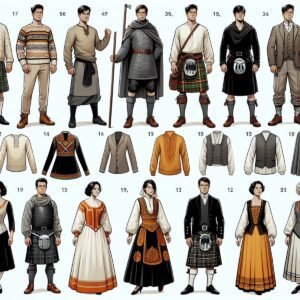
Introduction
Traditional Mexican clothing is a vibrant display of cultural identity and artisan textile skills. With its rich heritage and enduring allure, traditional Mexican clothing holds great significance in Mexican culture. In this article, we will take an in-depth look at the history, key garments, regional variations, and cultural importance of Traditional Mexican Clothing.
The History and Influences of Traditional Mexican Clothing
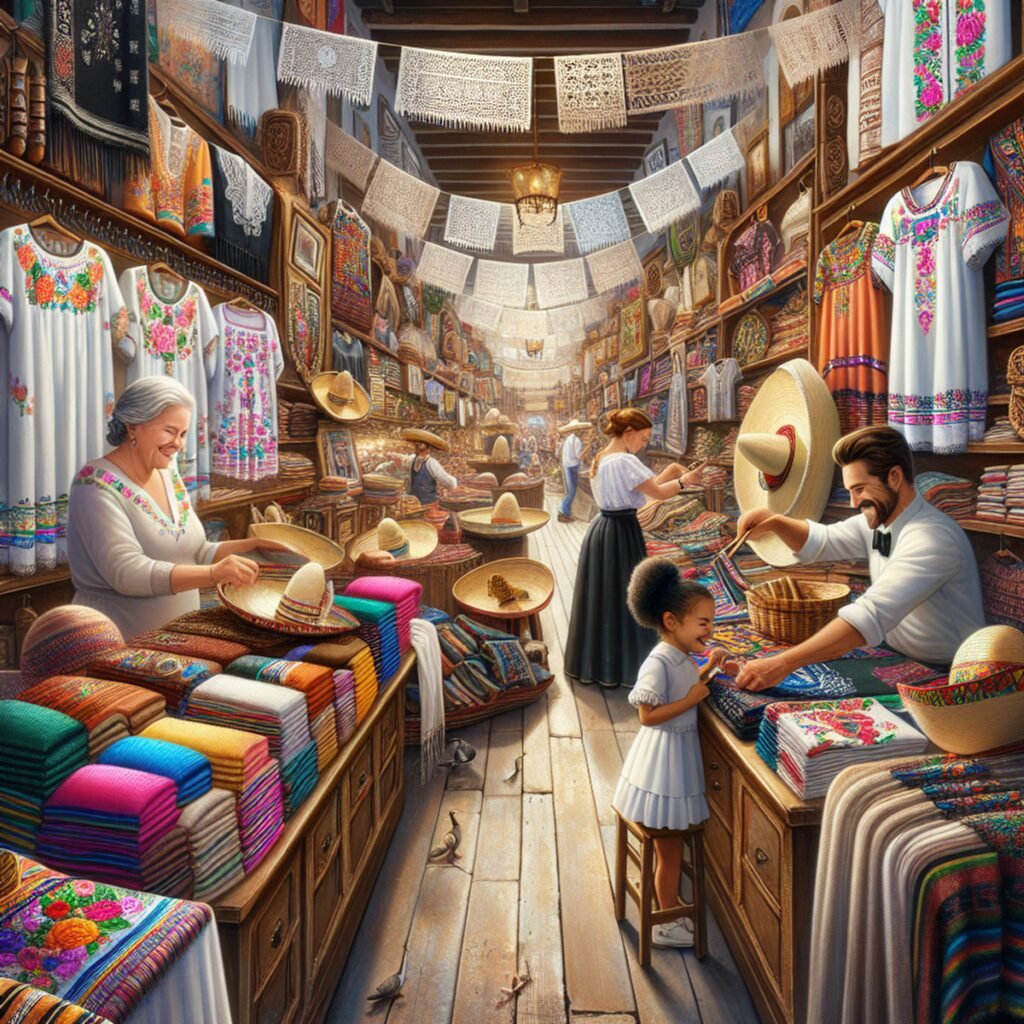
Traditional Mexican clothing has a fascinating history that showcases the diverse indigenous cultures and the lasting impact of Mexican heritage. It represents not only a sense of national pride but also the incredible textile abilities and methods passed down through many generations.
Indigenous Textile Skills and Techniques
Understanding Indigenous Textile Skills
The story of Mexican traditional clothing is closely intertwined with the extraordinary textile skills of native communities. These skills are an essential part of Mexican culture, representing longstanding customs and artistic expression. Each technique, whether it’s weaving or embroidery, carries a profound connection to the land, traditions, and beliefs of the skilled craftsmen.
Backstrap Loom Weaving and Its Significance
One of the most important textile skills in traditional Mexican clothing is backstrap loom weaving. This ancient method, dating back to pre-Columbian times, involves weaving fabric on a basic loom secured around the weaver’s waist. The backstrap loom allows for intricate patterns and designs, showcasing the weaver’s expertise and creativity. The resulting textiles hold deep cultural meaning, often featuring symbols from nature, mythology, and everyday life.
Various Embroidery Techniques Used in Mexican Clothing
Embroidery plays a crucial role in embellishing traditional Mexican garments with intricate patterns and vibrant hues. Different regions throughout Mexico have their own unique embroidery styles, each narrating its own tale through needlework. Elaborate stitches like cross-stitch, satin stitch, and chain stitch are carefully executed to craft visually striking designs that celebrate local customs and folklore.
The Importance of Skilled Artisans in Safeguarding These Ancient Crafts
Skilled artisans are the guardians of indigenous textile skills, tirelessly safeguarding these ancient crafts through their passion and expertise. Their labor-intensive work covers every aspect of garment production, from spinning raw fibers to fashioning elaborate designs. By upholding these traditions, artisans contribute to the preservation of cultural heritage while also promoting sustainable livelihoods within their communities.
Key Garments in Traditional Mexican Clothing
The origins of traditional Mexican clothing and its deep-rooted history can be traced back to the indigenous cultures that have inhabited Mexico for thousands of years. Influences from indigenous cultures in Mexico and Guatemala have played a significant role in the development of Mexican attire, resulting in a diverse range of garments that showcase the rich cultural heritage of the region.
Huipil: A Colorful Sleeveless Tunic
One of the most iconic and widely recognized garments in traditional Mexican clothing is the huipil. The huipil is a sleeveless tunic worn by women in Mexico and Guatemala, and its style varies by indigenous region.
- Each huipil is a work of art, featuring intricate embroidery and vibrant colors that reflect the cultural identity of the wearer.
- The design and symbolism behind each huipil are deeply rooted in indigenous traditions, with patterns often representing elements from nature, mythology, or daily life.
- Skilled artisans employ various embroidery techniques to bring these garments to life.
Rebozo: A Versatile Shawl
Another key garment in traditional Mexican clothing is the rebozo, a shawl that symbolizes womanhood and national pride. The rebozo is typically made from a fine woven fabric, such as cotton or silk, and can be found in a wide array of colors and patterns.
- It is worn by women across Mexico and serves as both a practical accessory for carrying babies or goods and as a symbol of elegance and tradition.
- The intricate weaving techniques used to create a rebozo require great skill and precision, making each piece a unique work of art.
Sarape: A Vibrant Blanket-Style Shawl
The sarape is another important component of traditional Mexican attire. It is a blanket-style shawl that originated in the state of Coahuila and has since become synonymous with Mexican culture.
- Sarapes are traditionally made from wool and feature bold stripes or geometric patterns in vibrant colors.
- They are often worn during festive occasions or as an outer layer to provide warmth.
- Artisans utilize a pedal loom to create the intricate designs that are characteristic of this garment.
These key garments in traditional Mexican clothing not only represent the cultural significance of Mexico but also showcase the exceptional craftsmanship and textile skills of indigenous communities. Each piece is a testament to the rich heritage and enduring allure of traditional Mexican attire.
Regional Variations in Traditional Mexican Clothing
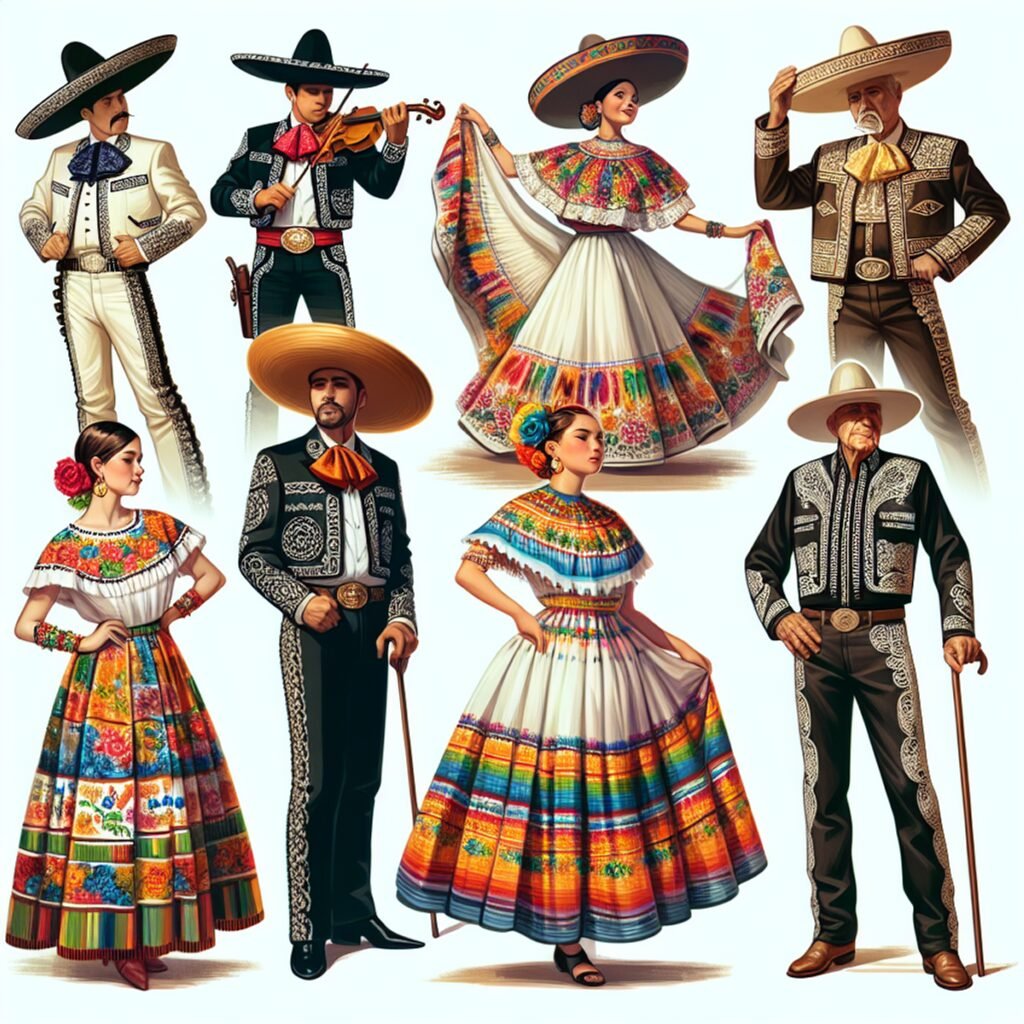
Traditional Mexican clothing is not only diverse in its key garments, but it also varies significantly from region to region. Each area of Mexico has its own unique styles, techniques, and cultural influences that are reflected in their traditional attire. Let’s explore some of the regional variations in Mexican clothing through case studies of Chiapas, Tabasco, and the Yucatán Peninsula.
Chiapas: A Tapestry of Indigenous Textile Traditions
Located in southern Mexico, Chiapas is known for its vibrant indigenous cultures and rich textile traditions. The clothing of this region is a true testament to the skill and artistry of the local artisans. Here are some key features of traditional Chiapan clothing:
- Huipiles: The huipil is a common garment worn by women in Chiapas. Each village has its own distinctive style and design, often incorporating intricate embroidery and vibrant colors. The huipiles of Chamula and Zinacantán are particularly renowned for their craftsmanship.
- Traditional Shawls: Chiapan women also wear shawls called “chals” or “chalinas” as part of their traditional attire. These shawls are often made using backstrap loom weaving, a technique that has been passed down through generations, and feature intricate patterns and motifs.
- Jaspe Technique: The jaspe technique is a dyeing method used to create intricate designs on fabric. In Chiapas, this technique is widely employed to produce beautifully patterned textiles.
Tabasco: Tradition Meets Tropical Vibes
Situated on the Gulf Coast of Mexico, Tabasco has a distinct style that reflects its tropical climate and cultural heritage. Here are some notable characteristics of traditional Tabascan clothing:
- White Dresses: Traditional dresses worn by women in Tabasco are typically white and made from lightweight fabrics such as cotton or linen. These dresses are often adorned with delicate lacework, giving them an elegant and feminine touch.
- Hammocks: Tabasco is famous for its hammocks, which are an integral part of the region’s cultural identity. Hammocks are not only used for sleeping but are also incorporated into traditional clothing, serving as a unique and practical accessory.
- Straw Hats: Due to the hot and humid climate, straw hats are commonly worn in Tabasco to provide shade and protection from the sun. These hats come in various styles and are often decorated with colorful ribbons or flowers.
Yucatán Peninsula: Mayan Influence and Timeless Elegance
The Yucatán Peninsula is home to the ancient Mayan civilization, and its traditional clothing reflects this rich heritage. Here’s what you can expect to find in Yucatecan attire:
- Hipiles: The hipil is a long, loose-fitting dress that is synonymous with Yucatecan women’s clothing. It is typically made from white cotton fabric and adorned with intricate embroidery along the neckline and sleeves. The designs often feature symbolic motifs inspired by Mayan culture.
- Rebozos: Similar to other regions in Mexico, rebozos (shawls) play an essential role in Yucatecan attire. They are used as versatile accessories that can be worn in different ways, such as draped over the shoulder
The Revival of Traditional Mexican Clothing in Contemporary Fashion
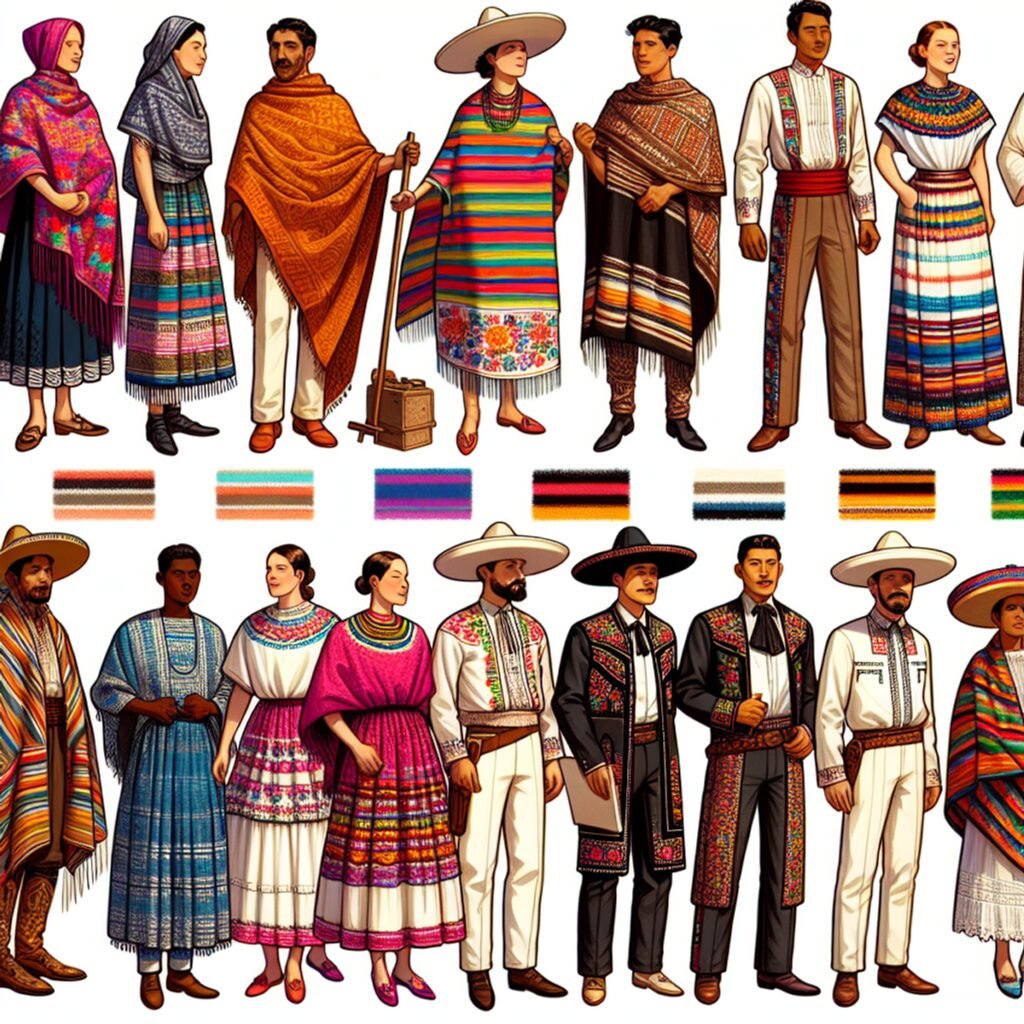
Frida Kahlo’s Influence on Traditional Mexican Clothing
Frida Kahlo, the iconic Mexican artist known for her distinctive style, has played a significant role in popularizing traditional Mexican clothing. Her self-portraits often featured indigenous attire, showcasing the beauty and cultural richness of Mexican garments. Through her art and personal fashion choices, Frida Kahlo became a symbol of national pride and a source of inspiration for contemporary designers.
The Ongoing Revival of Mexican Attire in Contemporary Fashion
In recent years, there has been a notable resurgence of traditional Mexican clothing in the world of fashion and popular culture. Designers have been incorporating elements of Mexican attire into their collections, reimagining classic garments with modern twists. Runway shows and celebrity red carpet looks have prominently featured rebozos, huipils, and other traditional pieces, bringing them into the spotlight on a global stage.
This revival not only pays homage to Mexico’s rich cultural heritage but also celebrates the artistry and craftsmanship of indigenous textiles. It serves as a testament to the enduring allure of traditional Mexican clothing and its ability to transcend time and trends.
Preserving the Legacy: The Importance of Supporting Ethical and Sustainable Practices in the Mexican Textile Industry
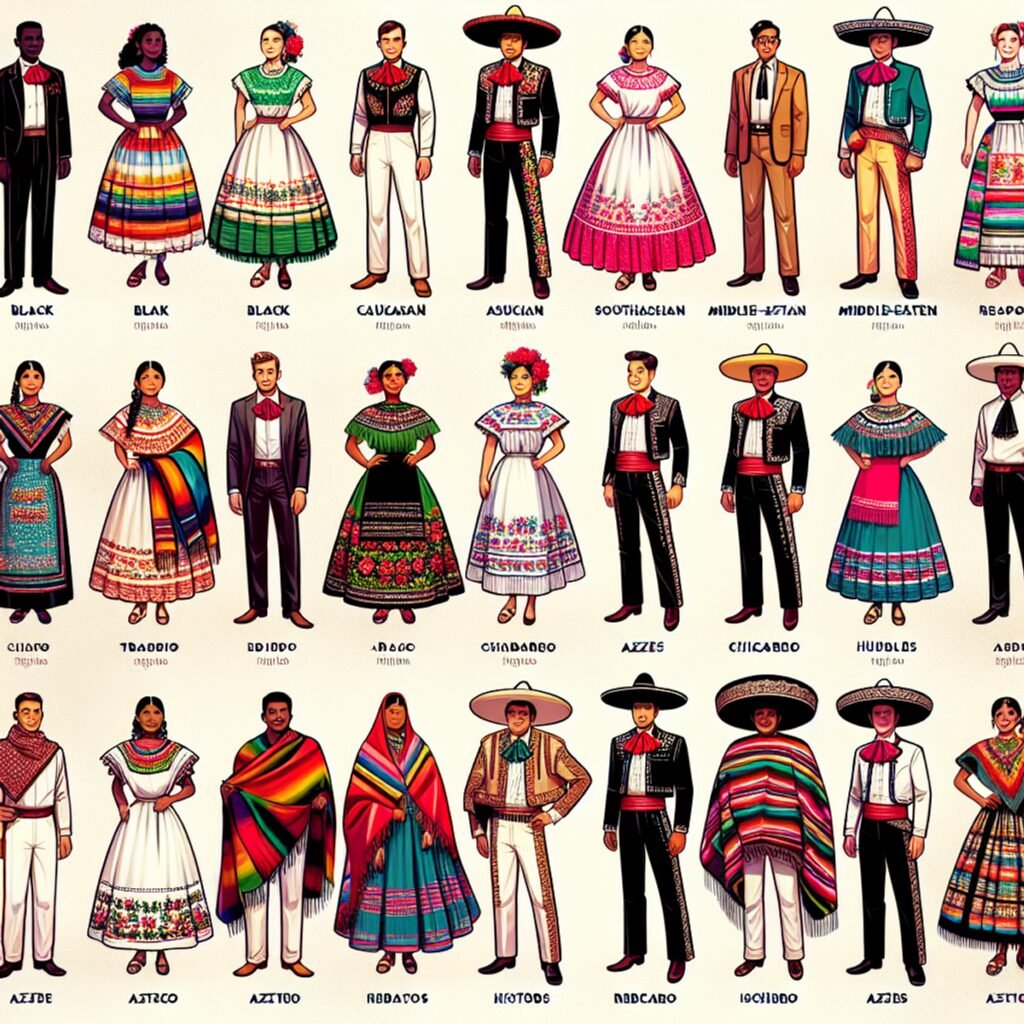
The traditional Mexican textile industry is not just about fashion; it is deeply rooted in cultural heritage and artisanal craftsmanship. However, the industry faces numerous challenges, including exploitation of workers, environmental degradation, and mass production. To ensure a positive future for the Mexican textile industry and preserve its legacy, it is crucial to support ethical and sustainable practices.
Why Ethical Fashion Matters
Ethical fashion promotes fair treatment of workers, transparency in the supply chain, and respect for the environment. By supporting ethical practices in the Mexican textile industry, we can:
- Protect Artisanal Skills: Ethical production methods prioritize the preservation of ancient textile techniques, ensuring that traditional skills are passed down to future generations. This not only helps sustain cultural heritage but also empowers artisans economically.
- Empower Communities: Supporting fair trade principles allows indigenous communities involved in textile production to earn a fair wage for their labor. This economic empowerment helps create sustainable livelihoods and reduces poverty.
- Promote Environmental Sustainability: Ethical fashion encourages sustainable practices such as using natural dyes instead of harmful chemicals, minimizing waste through upcycling and recycling, and reducing water consumption. These initiatives contribute to protecting the environment and mitigating climate change.
Making a Difference
As consumers, we have the power to drive change by making conscious choices when purchasing traditional Mexican clothing. Here are some ways you can support ethical and sustainable practices:
- Choose Fair Trade: Look for clothing brands that prioritize fair trade principles and provide fair wages to artisans. This ensures that your purchase directly supports the well-being and livelihoods of indigenous communities.
- Seek Transparency: Research brands to find out about their supply chain practices. Look for transparency regarding sourcing, production methods, and labor conditions.
- Opt for Sustainable Materials: Choose garments made from organic or recycled materials whenever possible. This reduces the environmental impact of clothing production.
- Buy Less, but Better: Invest in quality pieces that are made to last, rather than buying cheap, fast-fashion items that contribute to waste and exploitation.
- Support Local Artisans: Seek out independent artisans and cooperatives that produce traditional Mexican clothing. By purchasing directly from them, you can ensure a fairer distribution of profits.
By supporting ethical and sustainable practices in the Mexican textile industry, we can contribute to the preservation of cultural heritage, empower artisans, and protect the environment. Together, we can make a positive impact and ensure a vibrant future for traditional Mexican clothing.
Celebrating Cultural Diversity: Wearing Traditional Mexican Clothing with Respect and Appreciation
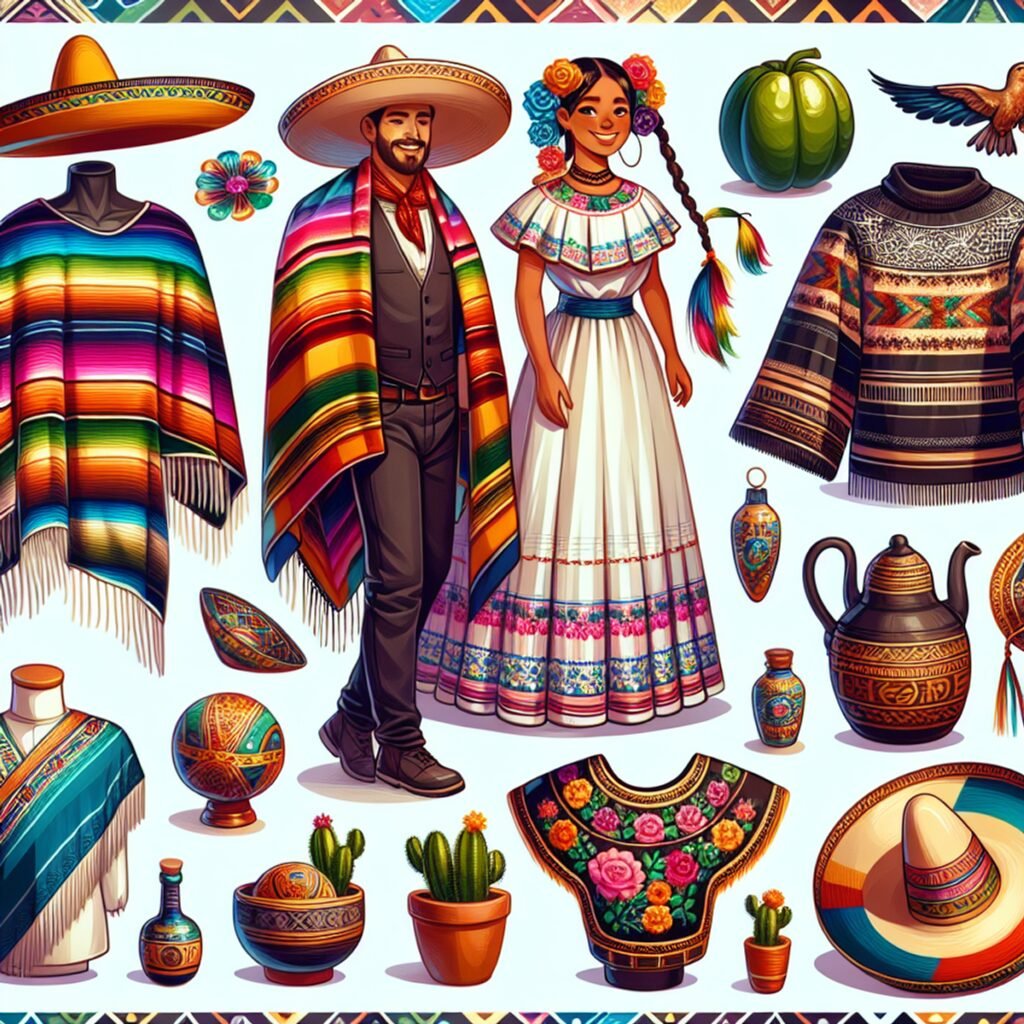
Traditional Mexican clothing is rich in culture and should be worn with respect to honor its heritage. Here’s a guide on how to do so while avoiding cultural appropriation:
1. Understanding the Cultural Significance
Before wearing traditional Mexican clothing, take the time to learn about its history, significance, and the communities to which it belongs. Understanding the cultural context will help you appreciate the attire more deeply.
2. Supporting Artisans and Ethical Practices
When purchasing traditional Mexican clothing, opt for pieces that are ethically made and support local artisans. Look for fair trade certifications or buy directly from artisans to ensure that your fashion choices contribute positively to the community.
3. Respecting Sacred Symbols
Some patterns, colors, or designs in traditional Mexican clothing may hold sacred or ceremonial significance. It’s important to respect these elements and avoid wearing them as mere fashion statements without understanding their meaning.
4. Avoiding Stereotypical Costumes
Refrain from treating traditional Mexican clothing as a costume for themed parties or events. Instead, embrace it as a form of art and cultural expression with the respect it deserves.
By approaching traditional Mexican clothing with understanding, respect, and appreciation for its cultural roots, you can celebrate its diversity in a meaningful way.
Conclusion
Traditional Mexican clothing is a vibrant embodiment of the country’s rich cultural heritage. Its intricate designs, colorful patterns, and skilled craftsmanship make it a symbol of national identity and pride.
By embracing and celebrating Mexican traditional clothing, we not only appreciate the artistry and skill behind each garment but also honor the indigenous communities that have preserved these traditions for generations.
Wearing traditional Mexican clothing respectfully allows us to showcase our admiration for this vibrant culture while avoiding cultural appropriation. Here are some key takeaways to guide you in wearing Mexican traditional clothing with respect and appreciation:
- Educate yourself: Learn about the significance and history of different garments to understand their cultural context.
- Support ethical practices: Choose clothing that is made by skilled artisans using sustainable and fair trade principles.
- Embrace cultural diversity: Celebrate the regional variations in traditional Mexican clothing and explore the unique styles from different indigenous communities.
- Mix with modern fashion: Incorporate elements of traditional Mexican clothing into your everyday wardrobe to showcase their beauty and versatility.
- Share the story: When complimented on your traditional attire, share the history and cultural significance behind it, promoting understanding and appreciation.
By following these guidelines, we can ensure that our admiration for Mexican traditional clothing is expressed with respect and authenticity. Let us continue to celebrate the vibrancy of Mexico’s cultural heritage through its captivating traditional attire.
FAQs (Frequently Asked Questions)
What is the significance of traditional clothing in Mexican culture?
Traditional clothing holds great cultural significance in Mexican culture, representing the rich heritage and enduring allure of the country. It reflects the history, indigenous influences, and regional diversity of Mexico, making it an integral part of the country’s identity.
What are some key garments in traditional Mexican clothing?
Key garments in traditional Mexican clothing include the huipil, rebozo, and sarape. These garments have deep-rooted historical origins and are crafted with great cultural significance and craftsmanship.
How has Frida Kahlo influenced the revival of traditional Mexican clothing in contemporary fashion?
Frida Kahlo has had a significant influence on the revival of traditional Mexican clothing in contemporary fashion. Her iconic style and embrace of indigenous attire have inspired a resurgence of Mexican attire in popular culture, as seen in recent runway shows and celebrity red carpet looks.
Why is it important to support ethical and sustainable practices in the Mexican textile industry?
Supporting ethical and sustainable practices in the Mexican textile industry is crucial for preserving the legacy of traditional clothing. By promoting fair trade principles and ethical production methods, we can ensure a positive future for the industry while respecting the cultural heritage and skilled artisans involved.
How can one wear traditional Mexican clothing respectfully without engaging in cultural appropriation?
To wear traditional Mexican clothing respectfully, it’s important to make thoughtful and informed fashion choices. This involves understanding the cultural significance of each garment, avoiding stereotypes or caricatures, and supporting artisans and communities through fair trade practices.
What is the role of skilled artisans in preserving indigenous textile skills used in traditional Mexican clothing?
Skilled artisans play a vital role in preserving indigenous textile skills used in traditional Mexican clothing. Their expertise in techniques such as backstrap loom weaving and embroidery ensures that these ancient crafts are passed down through generations, contributing to the cultural richness and authenticity of Mexican attire.
